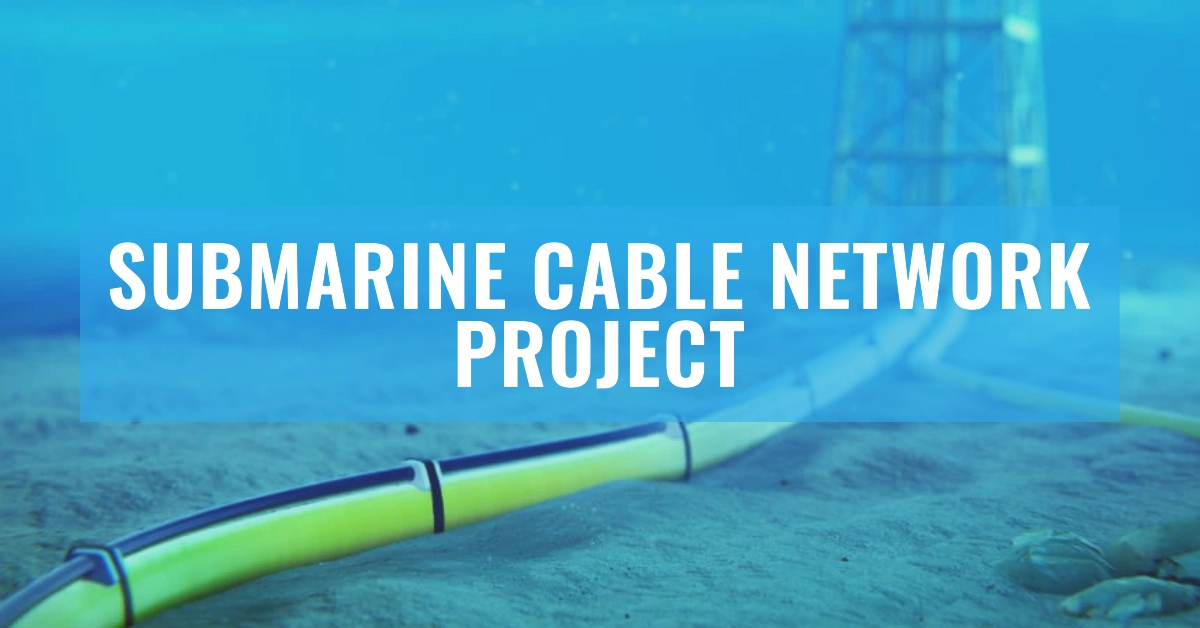The Philippines has long struggled with slow and expensive internet services, consistently ranking low in global speed tests. This has been a major hurdle for businesses, education, and overall economic development.
The Marcos government has made addressing this issue a priority, and the Submarine Cable Network Project is touted as a crucial step towards providing fast, reliable, and affordable internet nationwide.
Introducing PDSCN
The Philippine Domestic Submarine Cable Network (PDSCN) is an ambitious infrastructure project designed to revolutionize internet connectivity in the archipelago.
Through a massive network of undersea fiber optic cables, the PDSCN aims to bridge the digital divide between urban centers and remote communities. This is expected to create numerous benefits for Filipinos, improving education, healthcare, business opportunities, and the overall quality of life.
Understanding the key components and goals of this project is vital in gauging its potential impact on the nation.
Project Overview
- What is it? The PDSCN is a vast system of submarine fiber optic cables laid across the ocean floor. These cables, carrying massive amounts of data at immense speeds, connect Luzon, Visayas, and Mindanao, significantly enhancing connectivity within the Philippines.
- Partners: This project is a major collaboration between Globe Telecom, Eastern Communications, and InfiniVAN Inc., alongside support from the Department of Information and Communications Technology (DICT).
- Technology: Fiber optic cables offer superior data transmission capabilities compared to traditional copper lines. They facilitate faster speeds, greater bandwidth, and reduced latency (signal delay).
Key Benefits of the PDSCN
- Faster, More Reliable Internet: Filipinos will see enhanced internet speeds, stability, and reliability. These improvements will benefit everything from online gaming to accessing vital government and banking services.
- Bridging the Digital Divide: Improved infrastructure will make high-speed internet access possible in remote communities that are currently lacking. This will create economic opportunities and enhance public services for residents of underserved areas.
- Attracting Technology-Centric Businesses: Enhanced connectivity boosts the country’s attractiveness for investment from data-heavy industries like hyperscale data centers and AI computing.
- Innovation in E-governance and e-services: A resilient digital infrastructure enables the government to better streamline public services through digital and mobile applications – making information and interactions between government and citizens more seamless.
Social and Economic Impact
The PDSCN project isn’t just about faster internet speeds; here’s why it presents a broader social and economic transformation for the Philippines:
- Enhanced Education: High-quality internet opens avenues for improved educational resources, remote learning opportunities, and collaboration between institutions, expanding access to education for countless Filipinos regardless of location.
- Improved Healthcare: Reliable connectivity strengthens telemedicine solutions, allowing health workers in remote areas to connect with specialists for consultations and real-time guidance during procedures.
- Growth of e-Commerce and Small Businesses: Fast and reliable internet opens new doors for e-commerce and online businesses, particularly in regions previously held back by poor connectivity.
Challenges and Future Considerations
- Maintenance and Upgrades: Submarine cables require continual upkeep to ensure efficient and reliable service. Long-term plans for maintenance costs and technological updates are essential.
- Accessibility and Affordability: While the PDSCN improves overall connectivity, efforts must be made to ensure accessible and equitable pricing structures, so the benefits can reach all corners of society.
- Digital Literacy: Alongside infrastructural improvements, there’s a need for programs to increase digital literacy, particularly in underserved communities, for users to maximize the benefits of enhanced connectivity.
Overall Thoughts
The Submarine Cable Network Project holds great promise in the transformation of the Philippines’ digital landscape.
The prospect of fast, reliable, and affordable internet across the nation fosters an exciting possibility for progress in education, healthcare, economic development, and an overall advancement for Filipino society.
As this ambitious project comes to fruition, its full impact and challenges will become clear – opening the way for further initiatives to build a digitally empowered future for the Philippines.

